When it comes to city passes and travel cards, it’s usually fairly easy to figure out whether they would be worth it for you or not. For things like the Paris Pass or London Pass, they have a list of the most popular attractions and how much they cost, right there for you to see. The Swiss Travel Pass, however, is shrouded in mystery, or at least it was until I spent several days tracking down all of the prices and benefits.
A great many of the visitors and commenters on my popular page about where to go in Switzerland on a short visit are wondering whether the Swiss Travel Pass is a good deal. Embarrassingly, I’ve always had to answer that I found the pass too confusing to confidently advise people on. Now that has all changed, after literally days of research.
Note: This article was last updated in February, 2024.
Disclosure: This is a reader-supported website and some of the links are affiliate links where a small commission is paid to help keep this site going, but the cost to visitors is the same. The Swiss Travel Pass seems quite expensive at first, so it felt like it might be hard to get your money’s worth out of it. As it turns out, it’s pretty easy to get good value, and it’ll be a good deal for many visitors.
New in 2024
Prices increased an average of 5.9% from 2023 on the Swiss Travel Passes, but the Half Fare Card remains at CHF120, which is where it’s been for many years. Train fares in the country increased by similar percentages so the value is basically unchanged. There were no other notable changes to service or the included attractions and train routes.
>>>Buy the Swiss Travel Pass online
Where to stay in Interlaken and the Lauterbrunnen Valley
Since most people reading this will be visiting the Interlaken area and I get so many questions about it, I decided to write a detailed guide on which area to stay in while visiting this area.
>>>Where to stay in Interlaken or the Lauterbrunnen Valley in Switzerland
I included many huge photos in that post so readers will be able to get a better idea of what each place looks like and they are worth a look by itself.
>>>Lucerne or Interlaken: Which to visit and how long to stay?
The article just above will help you decide on how long to spend in each of Switzerland’s two best tourist areas.
Are you 100% sure where you want to go in Switzerland? This should help
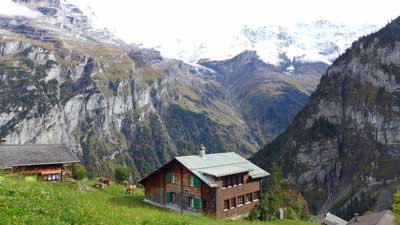
Zurich and Geneva are pleasant but dull. The good news is that Switzerland is packed with amazing sights and none of them are the big cities. If you aren’t 100% locked in yet, please read the article below and I think you’ll enjoy it.
Is the Swiss Travel Pass a good deal? Here's the short version

The bottom line is that the scenery, train journeys, and cable car rides in Switzerland are stunning and not found anywhere else in the world. They are also quite expensive if you pay for them one at a time. So no matter how you visit Switzerland, you are going to be paying quite a bit, or skipping the absolute best things that you’ve come there to see.
With good planning it’s quite easy to get great value out of a Swiss Travel Pass, but it might be a poor choice for those who don’t like to plan ahead. You can easily do a scenic train ride and a cable car in the same day, and still have time to do a scenic hike in the process.
First class or second class? Good news for most people
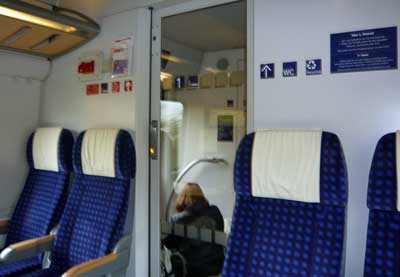
That said, Swiss Trains are literally the nicest in Europe and even the Second Class seats and carriages are nicer and roomier than trains in neighboring countries. The First Class seats are larger and nicer with only 3 across the cabin instead of 4, but honestly Second Class is perfectly comfortable for almost everyone.
Again, First Class on European trains like this is generally popular with business travelers where the company is paying and they need to get work done during the ride, and also senior citizens who don’t want to worry about a carriage full of backpackers. For most of the rest of us, Second Class is more than comfortable enough and the seat width and legroom compare to business-class airline seats. I’m a big and tall guy and I almost always travel in Second because it’s plenty comfortable enough and all the seats arrive at the same time anyway.
The longer you'll be in Switzerland, the better deal a Swiss Travel Pass will be
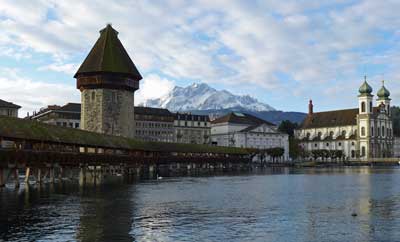
In other words, if you are staying 5 days or fewer, you have to do the math to determine your best option. But if you are spending even 6 or 7 days in Switzerland then the 6-day or 8-day Pass is almost guaranteed to be a great deal and your best choice. Once you have a Swiss Travel Pass you’ll absolutely love the ability to just hop on any train (excellent trains, always on time) and most boats and cable cars without having to worry about the cost. The per-day cost of an 8-day Pass even if you only use 6 of those days is about CHF65, and Switzerland is filled with amazing train rides and boats and cable cars that can get you that much value before noon each day.
Schilthorn (50% discount) and Jungfraujoch (25% discount) are cheaper with a Swiss Travel Pass
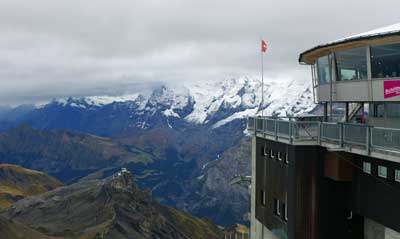
Both of those peak experiences are extraordinary and different from each other. Even so, compared to Jungfraujoch, Schilthorn is also faster and more comfortable on the way up and down. You can enjoy an excellent visit to Schilthorn in 4 hours or so (or a bit longer if you eat at the spinning Piz Gloria restaurant at the top), while a visit to Jungfraujoch requires closer to 6 hours.
NOTE: Schilthorn closes for maintenance for a week or two in late November most years.
Consider the Swiss Half-Fare Card instead
If you AREN’T going to be doing two or more of the long (and expensive) scenic train trips, you will get much better value out of the Swiss Half-Fare Card, which is explained a bit below.
Mt Rigi, near Lucerne, is 100% covered by the Swiss Travel Pass
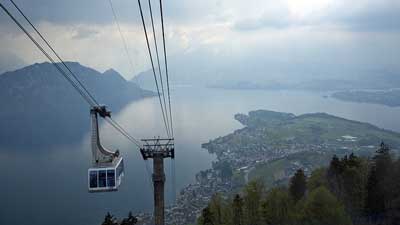
Is a Swiss Travel Pass right for you?
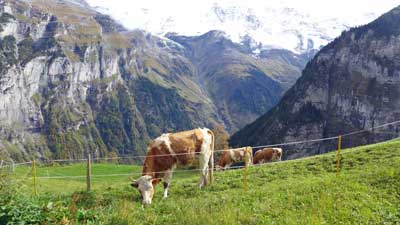
Most people only visit Switzerland for 5 or 6 days at most, so the 3-day and 4-day passes are the ones to focus on. But if you are staying for 8 days or more, those longer passes are almost certainly a great deal for you.
Long story short, if you plan on doing 2 of the more expensive scenic trains and the Jungfraujoch railway or the Schilthorn cable car, then the pass will save you money. Switzerland is expensive, but it’s worth it, and the travel pass can help make it a bit more affordable.
What the Swiss Travel Pass includes
- Free rail travel on normal trains and most scenic trains
- Discounted travel (about 50%) on popular tourist mountain trains
- Discounted travel (about 50%) on popular tourist cable cars
- Free travel on public transport in 75 towns and cities
- Free entry to around 500 museums in Switzerland
The Swiss Travel Pass covers the fare on the most popular scenic and panoramic trains. You can choose a normal seat in a regular carriage for no additional cost, but there is a supplement of CHF8 to CHF49 for a reserved seat in one of the special panorama carriages on these routes.
Prices of the 2024 Swiss Travel Pass
1st Class
- Adult 3-day Pass: CHF389
- Youth (4 to 25) 3-day Pass: 274
- Adult 4-day Pass: 469
- Youth (4 to 25) 4-day Pass: 330
- Adult 6-day Pass: 602
- Youth (4 to 25) 6-day Pass: 424
- Adult 8-day Pass: 655
- Youth (4 to 25) 8-day Pass: 469
- Adult 15-day Pass: 723
- Youth (4 to 25) 15-day Pass: 512
2nd Class
- Adult 3-day Pass: CHF244
- Youth (4 to 25) 3-day Pass: 172
- Adult 4-day Pass: 295
- Youth (16 to 25) 4-day Pass: 209
- Adult 6-day Pass: 379
- Youth (16 to 25) 6-day Pass: 268
- Adult 8-day Pass: 419
- Youth (16 to 25) 8-day Pass: 297
- Adult 15-day Pass: 459
- Youth (16 to 25) 15-day Pass: 328
Swiss Travel Pass Flex
This version costs a bit more, but you don’t have to use the travel days consecutively. It’s a great option for anyone who won’t be taking longer train rides each day.
- Adult 3 Flex days in 1 month (1st Class): CHF445
- Adult 3 Flex days in 1 month (2nd Class): 279
- Adult 4 Flex days in 1 month (1st Class): 539
- Adult 4 Flex days in 1 month (2nd Class): 339
- Adult 6 Flex days in 1 month (1st Class): 644
- Adult 6 Flex days in 1 month (2nd Class): 405
- Adult 8 Flex days in 1 month (1st Class): 697
- Adult 8 Flex days in 1 month (2nd Class): 439
- Adult 15 Flex days in 1 month (1st Class): 755
- Adult 15 Flex days in 1 month (2nd Class): 472
Where to buy the Swiss Travel Pass
The Swiss Half-Fare Card – A better option for many visitors
Far less confusing than the Swiss Travel Pass, you can instead get a Swiss Half-Fare Card, and it will be a better deal for many travelers. The price is lower and it’s much easier to do the math, and the discounts are greater on some things as well.
- Swiss Half-Fare Card for 30 days: Adults – CHF120 or US$129
What you get:
Those who buy the Swiss Half-Fare Card will get 50% discount on all trains, buses, and boats in Switzerland for up to 30 days, as well as 50% off all public transportation in 75 cities and towns.
>>>Buy the Swiss Half-Fare Card
Why the Half-Fare Card is a better deal for many
While the Swiss Travel Pass is a great deal for those doing many of the expensive scenic journeys and mountain sights within a few days, it’s not good value for those who are doing fewer of the expensive trips and/or those who are staying longer. Also, the Swiss Travel Pass only provides a 25% discount on the amazing Jungfraujoch Railway, which costs between CHF120 and CHF224 return depending on your starting point, while the Half-Fare Card provides a 50% discount.
The math is simple as well. You can just add up the cost of the trains, boats, and buses you’ll be taking while in Switzerland, and if the total is more than CHF240 or so, the Half-Fare Card will save you money.
Example itinerary:
- Zurich to Interlaken train (2nd Class): CHF50
- Schilthorn Cable Car: CHF112
- Jungfraujoch railway from Interlaken: CHF205
- Interlaken to Lucerne train (2nd Class): CHF33
- Mt Rigi roundtrip from Lucerne: CHF84
- Engelberg (near Lucerne) to Mt. Titlis Cable Car: CHF92
- Lucerne to Zurich train (2nd Class): CHF25
Total per person: CHF601
Total with Half-Fare Card (including price of card): CHF420.50
It would be tough to do all of those things in 4 days, although it is possible. If you bought a 4-day Swiss Travel Pass here is how it adds up:
4-Day Swiss Travel Pass: CHF259
Supplements for Schilthorn, Jungfraujoch, and Mt. Titlis: CHF203.25
Total cost: CHF462.25
Bottom line on the Swiss Half-Fare Card
Since the Half-Fare Card lasts 30 days and provides a larger discount on Jungfraujoch, it is better value for visitors who want to include that scenic top-of-Europe rail journey on their trip. The discounts also add up more quickly on Schilthorn and Mt. Titlis trips, just to name two examples, and you don’t have to take many longer rail journeys to get value out of the Half-Fare Card.
Swiss Saver Day Pass (A one-day unlimited travel pass)
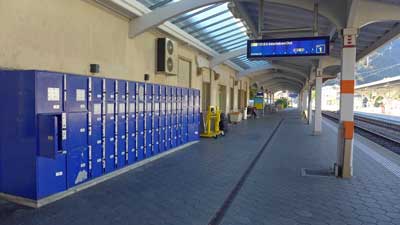
If you buy the Saver Day Pass at least 21 days in advance (and up to 60 days in advance) the 2023 cost is:
- 2nd Class (with Half Fare Card): CHF29
- 1st Class (with Half Fare Card): CHF82
- 2nd Class (with no Half Fare Card): CHF52
- 1st Class (with no Half Fare Card): CHF97
Once you research the normal cost of Swiss train fares you’ll see that the above prices are a very good deal for anyone riding more than 150 kilometers or so in a day. If you are just going, for example, from Zurich to Lucerne or Interlaken on a day, it’ll be cheaper to just buy that ticket individually. But if you are going from Geneva or Montreux to Interlaken or Lucerne then the Saver Day Pass will be much cheaper. Better still, you can use a Saver Day Pass to go from Interlaken to Geneva and back on the same day on the Goldenpass line and returning on the faster train through Bern, and it will still all be included for free.
If you don’t buy a Saver Day Pass at least 14 days in advance it’s more expensive, and if you only buy 1 to 3 days in advance it’s VERY expensive, so the key is to buy early. This is all confusing, but the Saver Day Pass should be a great option for many people only in Switzerland for one to three days.
Popular Swiss panorama scenic trains
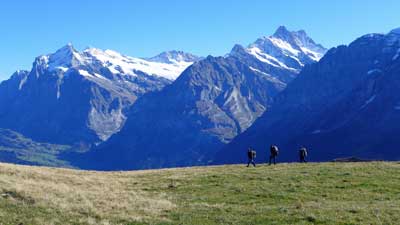
- Glacier Express
- Route: Zermatt to St. Moritz
- Train type: Panorama
- Journey time: 8 hours 3 minutes
- Distance: 291km
- 1st Class fare: CHF272
- 2nd Class fare: CHF159
- Compulsory seat reservation fee: CHF44 or 49
- Supplement for Swiss Pass holders: 13 to 33 for panorama carriage
- Bernina Express
- Route: Chur to Tirano and Lugano
- Train type: Panorama and bus
- Journey time: 4 hours 13 minutes and 3 hours 10 minutes
- Distance: 148km and 90km
- 1st Class fare: CHF113
- 2nd Class fare: CHF66
- Compulsory seat reservation fee: CHF32
- Supplement for Swiss Pass holders: 10 to 14 for panorama carriage
- GoldenPass Line
- Route: Lucerne to Montreaux
- Train type: Panorama
- Journey time: 5 hours 8 minutes
- Distance: 191 km
- Prestige Class fare: CHF131
- 1st Class fare: CHF96
- 2nd Class fare: CHF56
- Supplement for Swiss Pass holders: 8 to 15 for panorama carriage
- Gotthard Panorama Express (formerly Wilhelm Tell Express)
- Route: Lugano or Locarno to Lucerne
- Train type: Panorama and boat
- Journey time: 5 hours 21 minutes
- Distance: 182 km
- 1st Class fare: CHF164
- 2nd Class fare: CHF135
- Supplement for Swiss Pass holders: 39 to 49 for panorama carriage
- Swiss Chocolate Train
- Route: Montreux to Broc round trip
- Train type: Panorama or First Class
- Journey time: X hours X minutes
- Distance: 82 km
- 1st Class fare: CHF99
- 2nd Class fare: 89
- Supplement for Swiss Pass holders: 39
Popular Swiss scenic and theme trains
The scenic trains below are also extremely popular as sightseeing journeys rather than just as transportation, but can be used as both.
- Jungfraujoch round trip
- Route: Interlaken to Jungfraujoch
- Train type: special mountain train
- Journey time: 4 hours 41 minutes, round trip, plus time on top
- Distance: 73 km
- 1st Class fare: N/A
- 2nd Class fare: CHF224
- Supplement for Swiss Pass holders: 147 (so, a saving of CHF77)
- Gornergrat Railway
- Route: Gornergrat Railway
- Train type: Cog railway
- Journey time: 44 minutes return
- Distance: 10 km
- 1st Class fare: N/A
- 2nd Class fare: CHF90
- Supplement for Swiss Pass holders: 45
- Rigi round trip
- Route: Lucerne to Rigi
- Train type: Cog railway
- Journey time: 3 hours 25 minutes, plus time at the top
- Distance: 58 km
- 2nd Class fare: CHF78
- Supplement for Swiss Pass holders: None (this one is free with the pass)
- Mt Rigi Excursion (one-way and walk down)
- Route: Lucerne to Mt Rigi
- Train type: cogwheel train and/or cable car
- Journey time: 45 minutes up
- 1st Class fare: N/A
- 2nd Class fare: 49
- Supplement for Swiss Pass holders: 0
- Lotschberg Mountain Route and Centrovalli
- Route: Bern to Locarno
- Train type: Narrow gauge
- Journey time: 4 hours 40 minutes
- Distance: 212 km
- 1st Class fare: CHF158
- 2nd Class fare: CHF90
- Supplement for Swiss Pass holders: 5
- Jura round trip (Watchmaking Tour)
- Route: Neuchatel through Jura
- Train type: Regular
- Journey time: 3 hours 0 minutes
- Distance: 143 km
- 1st Class fare: CHF168
- 2nd Class fare: CHF108
- Supplement for Swiss Pass holders: 0
- Pre-Alpine Express
- Route: St. Gallen to Lucerne
- Train type: Regular
- Journey time: 2 hours 15 minutes
- Distance: 146 km
- 1st Class fare: CHF83
- 2nd Class fare: CHF47
- Supplement for Swiss Pass holders: 0
- Jura Foot Line
- Route: Basel to Geneva
- Train type: Regular
- Journey time: 2 hours 40 minutes
- Distance: 248 km
- 1st Class fare: CHF132
- 2nd Class fare: CHF75
- Supplement for Swiss Pass holders: 0
Popular Switzerland cable car rides
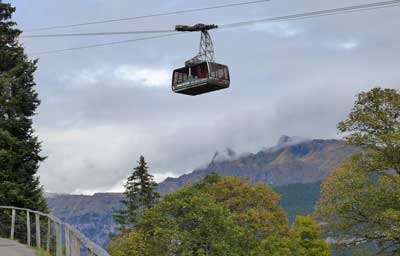
- Schilthorn
- Route: Stechelberg (Lauterbrunnen) to Schilthorn
- Train type: cable car
- Journey time: 1 hour
- 2nd Class fare: CHF108
- Supplement for Swiss Pass holders: 54
- Engelberg to Mt. Titlis cable car
- Route: Engelberg to Mt. Titlis
- Train type: cable car
- 2nd Class fare: CHF96
- Supplement for Swiss Pass holders: 46
The Swiss Travel Pass also includes free museum admission, but…
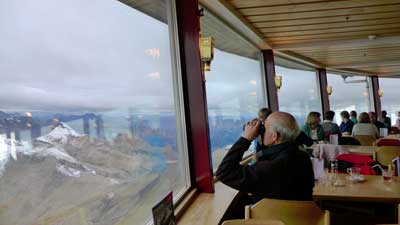
The problem is that the museums are only free on valid travel days, and almost no one would visit more than one or two museums with a Swiss Travel Pass. The trains and cable cars are so expensive that the pass gives very good value to cover those, so you don’t want to waste precious sightseeing time walking through a museum that only costs CHF10 anyway.
In other words, calculate the value of a Swiss Travel Pass on the travel savings only, and if you visit a museum here or there, then great. Most people are better off trying to squeeze in an additional train ride each day, and ignoring the museums. Switzerland is all about the outdoor scenery. As nice as the museums may be, they are not why you are there.
The pass includes free public transport in most Swiss cities
Similar to the free museum part of the offer, it’s best to ignore or minimize the value of free public transportation. It could be helpful in Zurich, but in most other Swiss tourist towns you won’t need much public transport. In fact, in Interlaken, each hotel or hostel guest automatically gets a card for free public transportation within the town (including between the two train stations).
So you might use a ride or two each day on public transport, but that won’t add up to much in terms of value of your Swiss Travel Pass.

Hello Roger,
Wishing you a good day! Thank you so much for the wonderful sharing. I enjoy reading them!
For your info, I will be spending 5 days, 4 nights in Switzerland and most probably i will opt for the half fare card as you mentioned earlier in your post above. Plus, I will be convering Jungfraujoch and Schilthorn within two days. Besides, im thinking of going to Kandersteg as well ; just for the rodelbhan .
It is just im confuse whether i should spend a night in Interlaken- to see around or just proceed with three nights in Lauterbrunnen and one night in Lucerne before heading back to Zurich Airport.
Appreciate your opinion on this. Thanks!
– Hafiz
Hafiz,
That’s a tough call. Lauterbrunnen is one of the small villages in the area with beautiful views in every direction, but there is a limited selection of restaurants and other services, although there is a fairly large COOP supermarket right be the train station there. Interlaken has a nice location, but not as photogenic as the small villages, although it does have a wide variety of restaurants and other things and much more shopping. If you stay near Interlaken Ost train station then you can get from one to the other in less than 30 minutes. There are more hotels and restaurants and bars near Interlaken West, however.
If it were me I think I WOULD stay in Interlaken one or even two nights, partly because Lauterbrunnen is so small that you’ll see it all in a day or two. Either way, I’m sure you’ll love whatever you choose, as the whole area feels magical. Let me know if you have any other questions. -Roger
Hi Roger,
Thank you very much for the quick reply. Could you suggest good attractions to cover in 2 days with Tell Pass. One day I guess would go in Mount tetlis. Which other attractions are worth covering with this pass. I do not see much information about this unlike STP. Had two queries. , Is this pass valid for 24 Hrs or until midnight 12 and can this be booked online and printout can be directly used at lucerne or it is suggested to book it once I reach lucerne. Is https://www.tellpass.ch/en/information/prices/ the official site to buy this.
Thanks,
Vikash.
Vikash,
I’ll suggest the Lucerne lake cruise, which comes in different versions and leaves from the dock in front of the train station. The town itself is really nice to stoll around in. Aside from those basic things I really don’t like to give out hour-by-hour suggestions. You can Google “Things to do in Lucerne” and you’ll get many lists of all of the most popular options and you can choose the ones that most appeal to you.
These rail passes work on a calendar day basis, so they start with the first time you use it and then you can use them up until midnight on your last day. That does look like the website to buy it. -Roger
Hi Roger,
Thanks for the article and much information. I just plan to visit 2 days with 1 day Mount tetlis. Planning to reach Lucerne directly. Is it worth buying Tell Pass which has free entry to Mount tetlis and use it for any other good attraction one more day which I will be having or go for directly purchasing tickets there.
Thanks,
Vikash.
Vikash,
I think the Tell Pass could be a great option if you are only focusing on the Lucerne region. In just two days the Half Fare Card is kind of expensive, so it looks like the Tell Pass is probably your best choice for this trip. But as usual, the only way to know for sure is to add up the prices of the things you’ll use it on. Those train tickets even within that area are pretty expensive, so I think you should be able to get good value out of the pass. -Roger
Hi,
Firstly, thank you for this amazing article.
We are going for a 5 day Swiss trip this month with 3 nights Lucerne & 2 nights Interlaken. After reading your article I have made below itinerary:
Day 1: Reach Lucerne From Zurich airport around 1600 hrs then Local tour: Lion Monument; Bourbaki Panorama, The Old Town, The Chapel Bridge etc.
Day 2: Mt Titlis full day.
Day 3: Mt. Pilatus or Mt. Rigi plus Rhine falls
Day 4: move to Interlaken early morning. Harderklum exploration and then Goldenpass line
Day 5: Jungfrau or Schilthorn plus Explore Gimmelwald & Lauterbrunnen.
I have decided to go for Swiss travel pass for 4 days just to be on safe side. If anything above goes haywire swiss travel pass is a good bet.
I have decided more on schilthorn as its fully covered. But if Jungfrau is a must see I can include in Day 4 plan and remove Golden pass.
As it’s my first trip I am trying to squeeze max with top list locales. Can you advice on above or if I should remove and add something else.
I have decided more on schilthorn as its fully covered. But if Jungfrau is a must see I can include in Day 4 plan and remove Golden pass.
Thanks again.
Junaid,
I think your plan looks fantastic and I really don’t have any other suggestions. As you probably know, Mt Rigi and the boat trip that gets you there are fully included in the Swiss Travel Pass, so I’d recommend those and the boat trip itself is really wonderful. Schilthorn and Jungfrau are both really amazing and different from each other and you will love the one you choose. Since Schilthorn is included I’d choose that one as well. That long cable car up to the snow is an incredible experience just as the mountain train ride up to Jungfraujoch. Also, with Schilthorn it’s very easy to explore Murren and Gimmelwald on the way down by getting off the cable car and walking down to the station in the second one to continue your trip. Wengen and Grindelwald are also nice, but I prefer Gimmelwald and Wengen. Again, I think your plan looks great. Let me know if you have any specific questions. -Roger
Hi Roger,
I will be traveling to Switzerland next month for 15 days. I don’t have a settled itinerary, but I will be traveling all around the country- I don’t have plans to do any scenic railways, especially as I am not booking ahead and I understand the scenic trains tend to fill up, so the likelihood of getting a seat is low 🙂
I have done significant research on the Travel vs. Half-Fare passes, and like you note above, I have found that the Half-Fare pass will likely be more cost-effective for me. However I am wondering if you have any feedback on what lines at some of the more popular ticket counters might be like. From my research based on the loose itinerary I have now, it looks like the Travel pass would cost about $8 more per day- in your opinion, is it worth it to pay more to not have to worry about purchasing a ticket for the majority of my train rides (although I do understand I will have to purchase tickets for the mountain railways/cable cars that are not fully covered)?
Thank you for all your help 🙂
Anna
Anna,
If you are going for 15 days I am almost positive that a full Swiss Travel Pass will be your best option. You’ll use it for the trips you have in mind now, and you’ll also use it for trips that you discover while you are there. The Swiss trains are really comfortable and punctual, and almost the whole country is gorgeous. So just being able to hop on a train to the next town for dinner and then hop on the train back after that will really be wonderful.
As far as ticket queues, they are usually not too bad, and Switzerland is also famous for being not only a rich country but also experts at tourism. In a place like Budapest you might have to wait up to an hour in line for a ticket, but if Switzerland has long lines they just open more windows. Also, SBB (the Swiss rail company) has a smartphone app and I’m almost sure a visitor can also use it to buy tickets and store them, so you can do it all on your phone.
It’s also worth mentioning that the “scenic trains” are mostly just normal trains that also have a few panoramic carriages on them a few times a day. The panoramic carriages look like they are very nice, but you can always get a free seat in a normal carriage and those are also nice. In most cases you can see fabulous scenery really well from a normal seat, and if something is on the other side of the train you can often just move across for a better view.
In my experience the queues for the cable cars and mountain railroads aren’t too long either, and you can usually get those tickets in advance as well. Let me know if you have any other questions. -Roger
Hi Roger,
First of, a great blogpost ! Thanks.
I am planning a 6 days trip, I need your suggestion if this is all okay or a few tweaks is required ?
Day 1: Arrive Geneva from Paris around 1 PM. Do Geneva tourist spots.
Night stay in Montreux.
Day 2: Chillon castle, Cheese/Choclate Factory at Broc, then travel to Lauterbrunnen via Interlaken visiting Harder Kulm.
Night stay at Lauterbrunnen.
Day 3: Visit Jungfraujoch. Explore Local village at Gimmewald on return.
Day 4: Visit Schilthorn then Murren local village on return.
Day 5: visit Lucern. Drop luggage at station. visit 1 or 2 local Lucern spots.
Evening Train to Chur. Night stay at Chur.
Day 6: Take Bernina Express to Tirano.
Few suggestions,
Apart from any faults on above Itinerary, can you recommend where can we do few activities ? Like Sledging, Mountain coaster / toboggan slides etc.
Also, i really would like to buy Authentic swiss watch. Do you recommend which stops on my itinerary i should be looking for one and where ?
Regards,
Amrit
Amrit,
Your plan looks quite good, but already fairly busy. I’m not sure if it’s a typo or not, but you might want to explore Grindelwald or Wengen on the way back from Lauterbrunnen because those are on the way. Gimmelwald is just below Murren and you can walk from Murren down to Gimmelwald in about 15 minutes, and then it takes no more than 30 minutes to talk through Gimmelwald to the cable car station, even if you stop to take many photos.
I’m not sure about places to go sledding and such, although I know there are plenty in the Interlaken area and some in the Lucerne area. Since those are all commercial businesses I’d think you could check TripAdvisor for “things to do in Interlaken” and some of those would be on the list, along with handy reviews to help you find the better ones. Sorry I’m not much help with that.
As for Swiss watches you’ll have no shortage of places to buy them, but it’s also something I don’t know much about. I know some are made in Geneva and other large cities and others are made in smaller towns. One thing I don’t know is if there are showrooms that offer good prices on them. I’ve been all over the world and in most cases when you find an outlet that is aimed at the tourist market they tend to charge even MORE than in normal shops in other cities. I’d do some online research about that if I were you because I think there are probably some rip-offs out there and hopefully also some good deals. And you might look into duty-free as well if you get the chance. Best of luck with all of this. -Roger
Hello Roger, really appreciate here for giving information in this forum. I need your guidance as We are family of 4 people planning to visit Switzerland in this weekend from Munich
Planning is 2 days Lucerne, 3 days Interlaken and may be Montreux , Zermatt – thinking to Bus Swiss pass of 8 Days.
1. What is your suggestion – Lucerne and Interlaken we will go for sure but which other places we can cover in remaining 3 days? Or shall I reduce days in Interlaken?
2. Can you please let me know how to use Swiss pass? Do I need to book in advance for any normal and scenic train? . Or simply we can go and seat ?
Can you please
Dipti,
I think 3 days in Interlaken and 2 days in Lucerne is just about perfect, although there is plenty to do in both places so you could add more. I’m not sure if you’ve seen it, but I have most of my itinerary suggestions in this article about where to go in Switzerland.
If you want to spend a day in a Swiss city (especially if there is bad weather on the tops of the mountains) you should consider Bern, which is the most interesting of them. Zermatt is good for a day or so, although getting in and out is a bit of a hassle so make sure you research that before locking it in. Rhine Falls is another good choice in the warmer months. If you have a valid Swiss Travel Pass then taking the Goldenpass to Montreux is a really good day. In fact, Geneva and Lausanne are also lovely with views of the lake, even if the cities aren’t very interesting themselves. And if you have a Swiss Travel Pass then definitely plan on doing Schilthorn and Mt Rigi (near Lucerne) because they are both fully included.
If you have a valid Swiss Travel Pass then you can just hop on any normal train without a reservation and show your pass to the ticket person as they come by. The only trains that sometimes are crowded are the ones between big cities leaving in the early morning (filled with business travelers). When you get to Schilthorn or Mt. Rigi or any of the other cable cars you just show your pass and they let you on.
For most of the scenic trains there are special panoramic carriages on a few departures each day. You need to make a reservation in advance to ride in those carriages, and pay a seat supplement as well. They have a special website for each of the scenic routes and you can reserve the seats on those sites. It will ask if you have a rail pass so you’ll just have to pay for the seat rather than the whole thing. Let me know if you have any other questions. -Roger
Thanks for your good wishes and frankness, Roger.
Love your website, it is inspiring us for future trips as well.
Best regards – Zee
Hi Roger, great article you have here, love it!
Still deciding whether to get the half pass or not.
My iterinary is:
day1: zurich airport to lucerne
day2: lucerne to pilatus ( round trip -i think my hotel provides transport tickets)
day3: lucerne to mount rigi (round trip)
day4: lucerne to wengen
day5: wengen to junfrajoch
day6: wengen to geneva airport
I am assuming that because of junfrajoch, the half fare card is my best bet. however, As I am going late september, it is not guaranteed that I will be able to do junfrajoch due to the weather. what do you think?
Also roger, with the half fare card if i purchase it now, do I book the train tickets now or wait until I am at switzerland to do this?
Kind regards
Fi
Fi,
Yes, I’m pretty sure the Half Fare Card will be your best option for this itinerary. The 3-day or 4-day Pass would be too short, and the 8-day Pass would be too expensive. As for Jungfraujoch, it can be foggy or rainy on top any day of the year and I think in September you’ll have a good chance since you’ve got all day like that.
Train tickets within Switzerland are only available 30 days out and they are the same price no matter when you book, so booking once you get there is fine. The ticket queues are usually not too bad, but you might get unlucky and have to take a later train if you wait to buy tickets as you go. I prefer to buy things like the Half Fare Card in advance, and you can print it at home (and maybe use it on an app) for free.
You can buy Half Fare tickets at any time, even before you buy a Half Fare Card. When you go to pay for your tickets on the Swiss Rail website it will ask you which discount you want to use, and the top option is Half Price. The only thing to be sure of is you have to have a valid Half Fare Card with you when you are riding on the train with a half price ticket. The ticket person on the train will ask to see both. -Roger
Thank you Roger!
We hope to visit the Alsace region (including Colmar and others) in day trips as well as parts of Germany from our base in Basel.
Do you have any suggestions for those kinds of trips? Also will the Swiss travel pass help us with our journeys to and back from France and Germany?
Best regards – Zee
Zee,
The Swiss Travel Pass is, of course, only good within Switzerland, so it won’t be much help for France or Germany. Since Basel is on the border (and one of its stations is within Germany) it is the edge of the valid zone and you’d have to pay full price to go into Germany or France from there. The Alsace region is nice, but I’m not familiar enough with it to help you plan. I’ve spent most of my time in that area just north of Basel in Germany, including in Freiburg. To be honest, I find that area a bit dull and there isn’t much to see or do in the Black Forest that really stands out. I wish I could help you more. It’s probably just that I have family there and have visited enough times that it doesn’t seem special to me. You’ll probably love it. -Roger